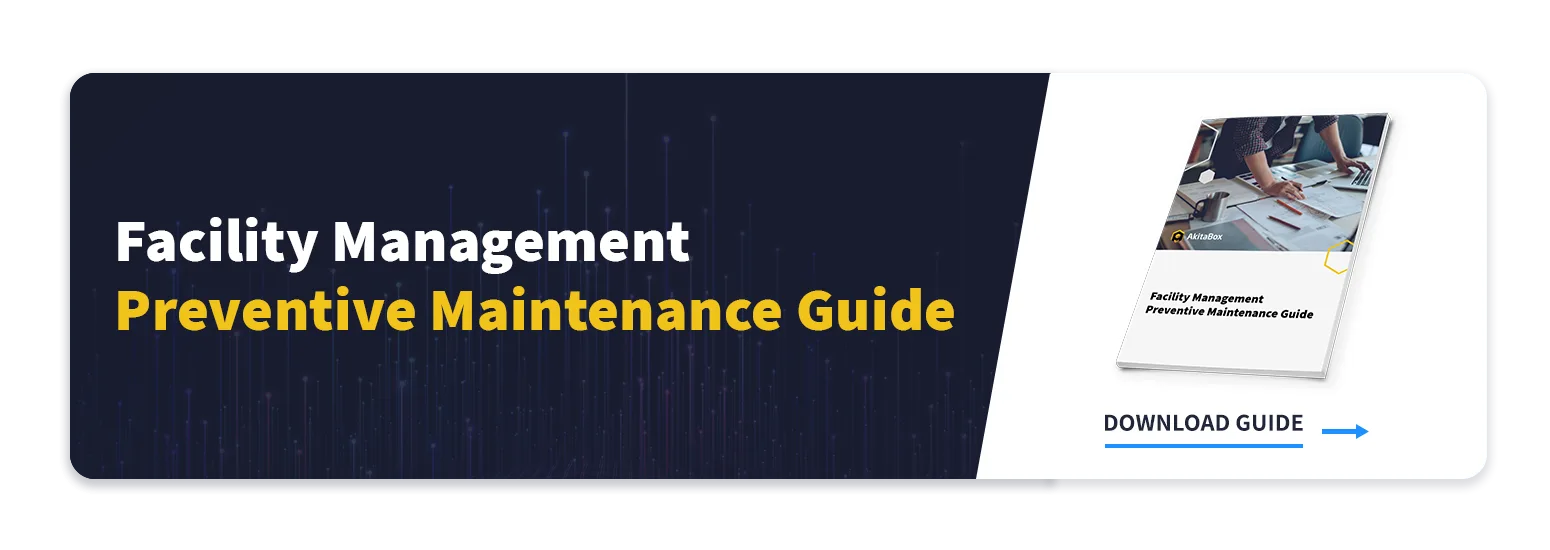In facility management, most maintenance tasks are categorized as either “reactive” or “preventive.” It’s important to know the difference between the two, since the most successful facilities departments maintain a healthy balance between reactive and preventive maintenance. Too much reactive maintenance can leave your team feeling stressed and overwhelmed. This is why it’s important to create a program that emphasizes preventive maintenance (PM) and minimizes the potential for reactive maintenance.
In this blog, we’ll explain the difference between reactive maintenance and preventive maintenance and provide you with several resources to help you implement a strong PM program of your own. Let’s start by taking a look at the concept of reactive maintenance.
What is Reactive Maintenance?
A reactive approach to facility management requires something to go wrong or break down before the issue gains attention. When an asset malfunctions, a maintenance technician will identify the issue that occurred and take steps to restore the asset to operational condition.
Some maintenance strategies, such as run-to-failure, purposely create reactive work. There are several good reasons for have a run-to-failure maintenance strategy for certain assets, such as small or non-critical assets that will have minimal financial impact when they break. However, if maintenance issues begin to pile up facility teams can become overwhelmed quickly. As this backlog piles up, repair costs can multiply and worsen over time.
Reactive Maintenance at a Glance
- Approach is crisis-based
- Chaotic execution of work responsibilities
- Frequent equipment failures
- Unplanned downtime due to equipment failure
- Delays in service and maintenance calls
- Increased costs due to broken building components
- Heavily people-dependent due to increased labor costs
Most money saved from reactive maintenance is negated, as it must be spent on unexpected breakdown repairs and parts replacements. Therefore, it’s a good idea to invest in a solid preventive maintenance program at your facility. Here’s how preventive maintenance differs from reactive maintenance.
What is Preventive Maintenance?
Conversely, a preventive approach to facility management involves foresight and identifies a crisis before it happens. Real-time measurements are taken to predict system degradation and mechanical failure. As a result, negative consequences are minimized.
A preventive maintenance program may have contingencies in place in the event of a breakdown, such as backup generators for power outages or spare parts for immediate asset repair. Machinery is actively monitored and maintained to ensure optimal functionality. The most notable results of preventive maintenance are extended life of critical assets, reduced downtime and increased team productivity.
Preventive Maintenance at a Glance
- Approach is preparation-based
- Organized execution of work responsibilities
- Fully functional equipment and building components
- Longer life expectancy of critical equipment
- Greater cost savings in maintenance
- Improved worker and environmental safety
- Faster response times to service and maintenance calls
- Upgraded facilities and improved preventive maintenance
- Detailed measuring/reporting of facility management metrics
- Utilizes a facility management software (FMS)
Preventive maintenance offers a variety of benefits over reactive maintenance. Saving money is a big advantage, but an even greater one is knowing your team is safe on the job. Preventive maintenance reduces risk and danger in your facility, since dangerous equipment is constantly monitored, inspected and serviced. Safe equipment can lead to higher employee satisfaction and fewer workplace injury claims, a win-win for everyone involved. (Learn more about facility safety and security in our free ebook.)
Learn More about Preventive Maintenance
If your facility runs on a reactive approach to maintenance, it’s never too late to shift towards a more preventive approach. Start by downloading The Facility Management Preventive Maintenance Guide. This guide covers how to collect facility and asset data, how to budget for a new preventive maintenance program, how facility inspections provide safer spaces for occupants and more.
Embrace Preventive Maintenance in Your Facilities Department
Do you still have a few pressing questions about preventive maintenance? Are you looking to create a plan that actually works? If so, AkitaBox is here to help. Our team of knowledgeable facility advisers is happy to answer any questions you may have. We’ll also work with you to identify tools and technology your team will need to be most successful as they adopt their new or improved PM program.
See how AkitaBox can help you solve your complex facility challenges and expedite the adoption of a preventive maintenance program. We look forward to speaking with you!
Thank you for reading! If you’ve enjoyed this blog, don’t forget to subscribe at the top or bottom of this page. Our weekly content will help you stay up to date on the latest innovations and best practices in the facility management industry.

